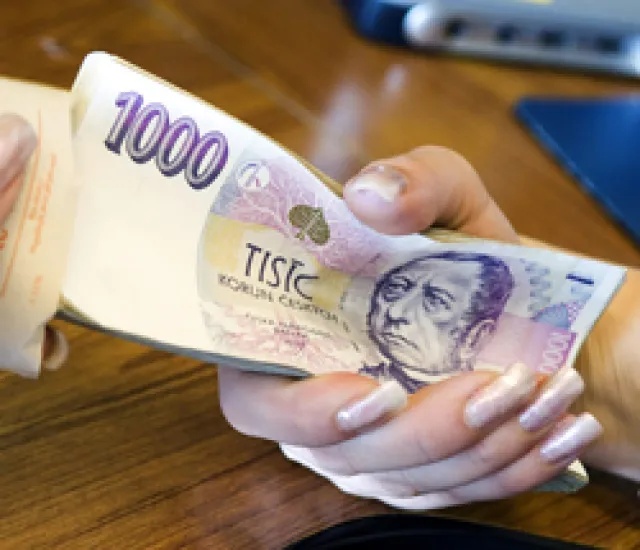It’s a “battle of the uglies” in the currency markets, says Jane Foley, senior foreign exchange strategist at Rabobank International in London. Because of low interest rates and poor fundamentals, the U.S. dollar has been one of the year’s worst performers. The Greek crisis and its spread to Portugal, Spain and possibly Italy have clouded the euro’s outlook.
“Given that these are two of the biggest currencies in the world and neither is very attractive, the market is searching around for opportunities elsewhere,” Foley explains. “When people start buying stocks again, you will also see them having an enhanced appetite to buy emerging-markets currencies.”
Some traders are turning their attention to the non-euro currencies of Eastern Europe. Because of the way banks organize emerging-markets currencies, this group includes not just the Hungarian forint, the Polish zloty, the Czech koruna and the Romanian leu, but also the Israeli shekel, the South African rand and the Turkish lira. The forint, in fact, has been one of the best-performing currencies this year, up about 3.3 percent against the euro and nearly 11.5 percent against the U.S. dollar as of mid-August.
Ilan Solot, a London-based emerging-markets currency strategist at Brown Brothers Harriman & Co., says investors’ risk appetite for the Eastern European group dropped sharply last month because of the sovereign debt crisis and the ensuing stock market swoon. For these currencies much depends on the European Union’s €109 billion ($155 billion) second bailout of Greece; analysts are betting that the appetite for risk will return in the fall as traders digest the bailout’s implications.
Hungary and Poland could suffer given their trade with the rest of Europe. However, Poland exports only about 40 percent of its gross domestic product, while Hungarian exports are closer to 60 percent of GDP. ?If Europe’s current troubles stifle the Continental economy, Hungary will take a proportionately bigger hit than Poland.
In light of the recent market panic, the surge of the Swiss franc also has investors in Eastern European currencies worried. So far in 2011 the forint has lost 6.55 percent against the Swiss currency, while the zloty is down 13.2 percent. These dramatic drops are troubling because both Hungary and Poland have large Swiss franc–denominated debt, mostly mortgages. “It will have a severe drag on economic activity going forward because people will be able to spend less on consumption,” says Bartosz Pawlowski, an emerging-markets foreign exchange strategist with BNP Paribas in London.
Despite such upheavals, Pawlowski, Foley and Solot are bullish on the zloty and negative on the forint. One reason is that only about 30 percent of Poland’s private sector debt is in foreign currency, compared with 60 percent for Hungary. Meanwhile, a greater percentage of Hungarian debt is Swiss franc–denominated. “It just confirms my conviction for the zloty,” Pawlowski says.
Interest rates are also affecting the currency outlook. Hungary’s central bank base rate is 6 percent; on July 26, Magyar Nemzeti Bank’s Monetary Council announced that the rate would stay unchanged for an extended period. Poland set its key seven-day interest rate at 4.5 percent in early July but hinted it might tighten later in the year, a move that has stoked enthusiasm for the Polish currency.
The Czech koruna, down 9 percent against the greenback and 3 percent against the euro this year, is another popular trade because the two-week repurchase rate in the Czech Republic sits at only 0.75 percent. As a result, the koruna has become the carry trade of Europe: Investors short it and take long positions in other currencies. BBH’s Solot is recommending that clients short the koruna and go long the zloty.
Through 2011 the Romanian leu has dropped 0.5 percent against the euro and 8 percent against the dollar. It suffers from the fact that Greek banks control many Romanian financial institutions; there’s concern about contagion from the euro crisis. Also, the market in the leu has very little liquidity. “There has been a lot of pain for a few investors who tried to get out of their positions because of the problems in Greece and haven’t really been able to,” Rabobank’s Foley says.
The enigma in the group is the Turkish lira, which so far this year has plunged 18 percent and 12 percent against the euro and the dollar, respectively. The decline gathered speed when the Central Bank of the Republic of Turkey unexpectedly cut its benchmark one-week repurchase rate by 50 basis points, to 5.75 percent, on August 4.
Convinced that the Turkish economy will flag in the second half of the year, the central bank remains extremely dovish, allowing the lira to slide, traders say. The bank’s gamble is that Turkey’s huge current-account deficit will begin to correct with a weak currency. If the economy does slow down and the deficit improves, it could be a buy signal for the lira, notes BNP’s Pawlowski. But for him it’s still too early to enter a long trade: “At this moment, it feels like catching a falling knife.” • •






